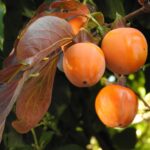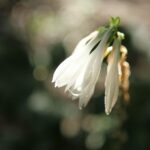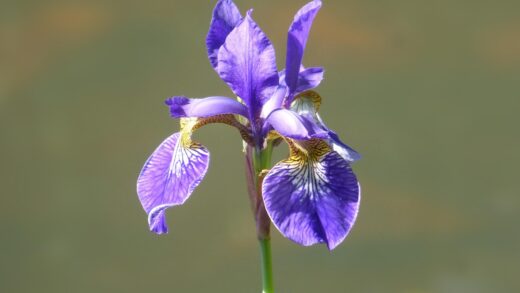The American Tulip Tree, or Liriodendron tulipifera by its scientific name, is one of the most imposing ornaments of parks and spacious gardens. With its majestic stature, unique, tulip-like flowers, and characteristic four-lobed leaves, it rightly earns admiration. Its pruning, however, is a task that requires special attention and expertise, and it fundamentally determines the tree’s health, safety, and aesthetic value for decades to come. It is important to emphasize that this tree species naturally develops a very beautiful, conical or oval crown with a strong central leader, so the goal of pruning is not to drastically change the natural form, but to fine-tune it and ensure the tree’s long-term vitality. An incorrect intervention or one performed at the wrong time can do more harm than good, which is why a thorough understanding of the tree’s biology and needs is essential before using pruning shears or a saw.
The primary and most important goal of pruning is to establish and maintain the tree’s structural integrity. On a young tree, formative pruning in the early years can ensure the development of a strong, stable scaffold branch system that will be able to support the weight of the enormous crown in the future. On older, already developed specimens, maintenance pruning comes to the forefront, with the main goal of preserving the tree’s health by removing diseased, damaged, or dead branches. Furthermore, pruning can also serve safety purposes, for example, by shortening branches that hang dangerously over buildings, sidewalks, or power lines. Last but not least, aesthetic considerations can also justify intervention, such as regulating the crown’s density for better light penetration and to promote air circulation that benefits flowering.
Successful pruning is conditional on understanding the tree’s growth characteristics. The American Tulip Tree has extremely vigorous growth and a tendency toward apical dominance, meaning it naturally strives to maintain a single, strong central trunk and leader. This characteristic should be supported, not worked against, as a crown with multiple competing leaders is structurally weaker and carries the risk of branch failure in the future. When pruning, we should always be guided by respect for the tree’s natural form, avoiding the creation of drastic and unnatural shapes. Interventions must be adapted to the tree’s life rhythm, taking into account seasonal changes in sap circulation and regenerative ability.
It is important to emphasize that pruning a mature, tens-of-meters-tall tulip tree is no longer a garden hobby, but an arboricultural task that requires serious professional knowledge and special equipment. Working on trees of this size is dangerous, and an inexpert intervention can cause irreparable damage to the tree while also endangering physical safety. If the pruning of an old tree becomes necessary, always turn to a qualified arborist. They have the necessary knowledge to assess the tree’s static condition, apply the correct pruning techniques, and perform the work safely. The information described in this article primarily pertains to the care of young and middle-aged trees that can still be safely reached from the ground.
The Ideal Time for Pruning
The most appropriate time to prune the tulip tree is during the tree’s dormancy period, that is, in late winter or early spring. In this period, usually from late February to late March, the tree has not yet started its intense sap circulation, so sap bleeding from pruning wounds is minimal. The leafless state has the additional advantage that the crown’s structure, the arrangement and condition of the branches, are clearly visible, which greatly facilitates making the right pruning decisions. Cuts made during the dormancy period have time to dry and for callus formation to begin before intense spring growth starts, so the tree can immediately direct its energy to wound healing and the development of new shoots.
More articles on this topic
Summer pruning is generally not recommended, as the tree is then in full vegetation, actively transpiring through its leaves and photosynthesizing. Removing a larger branch at this time causes significant stress to the plant, disrupts its nutrient and water balance, and the fresh wound surfaces are more attractive to pests and pathogens. Emergencies can be an exception, for example, the immediate removal of a branch broken in a storm that is hanging dangerously. Such emergency interventions should be carried out to the minimum extent possible and with the greatest care. During the summer period, at most, corrections to very small, pencil-thick shoots are permissible.
Autumn pruning should also be avoided. Although the tree is already preparing for its dormancy period, the pruning wounds no longer have time to close properly before the onset of winter. The frosty, damp weather creates ideal conditions for wound infections and the establishment of fungal diseases, which, by overwintering in the tree’s tissues, can cause serious problems in the spring. Furthermore, pruning in the autumn can stimulate late shoot growth, which would not have time to mature before the frosts and would easily freeze, causing additional damage to the tree.
In summary, for the tulip tree, the golden rule is patience and a nd correct timing. Let’s wait for the end of winter, when the harshest frosts have passed but bud break has not yet begun. This time window ensures the least stress for the tree and the fastest, cleanest wound healing. Choosing the right time is in itself a significant step towards preserving the long-term health and beauty of the tree, preventing many future problems that arise from interventions performed at the wrong time.
Shaping the Young Crown
The first few years of a young tulip tree’s life are critically important for its future stable structure. The careful formative pruning done in this period determines the tree’s shape and static strength for decades. The most important goal at this stage is to establish and maintain a single, strong, vertical central leader. If two or more shoots of nearly equal strength compete at the top of the tree, growing upwards, a so-called fork develops. This situation must be corrected, as such narrow, V-shaped forks are extremely weak, the bark can grow inwards, and the old tree can easily split here under the weight of snow or wind.
More articles on this topic
From the competing leaders, choose the straightest, strongest shoot that is closest to the trunk’s centerline and leave it. Remove the other or others at the base, leaving the branch collar at the point of attachment intact. The younger the tree is during this intervention, the smaller the wound will be. Besides the central leader, the next important task is the selection of the scaffold branches, that is, the lateral branches that form the main supporting structure of the crown. Choose branches that form a wide angle, at least 45-60 degrees, with the trunk, as these connections are much stronger. The scaffold branches should be arranged spirally around the trunk, with sufficient vertical and horizontal distance between them, so they do not shade or hinder each other’s growth.
During formative pruning, you must also remove shoots growing in the wrong direction, inwards, or crossing other branches. Branches that lie on top of each other and rub together damage their bark, which opens a path for pathogens. You must also cut off watersprouts that shoot up steeply and vertically from the trunk or thicker branches, as they are weakly attached and take energy away from the more valuable parts of the tree. Raising the lower part of the crown, that is, removing the lower branches, is also a task of this period, but this should be done gradually, year by year. Never remove too many lower branches at once, because the trunk needs their shade for protection from sunscald.
The key to shaping the young crown is gradualness and moderation. In a single pruning season, never remove more than 20-25 percent of the tree’s crown. Excessive pruning shocks the tree and stimulates it to produce numerous, weakly structured watersprouts, which is the exact opposite of the desired goal. The result of patient, multi-year, and thoughtful formative work will be an aesthetic, airy, but statically extremely strong and healthy crown, which can be the pride of your garden for decades without requiring major interventions.
Maintenance Pruning of the Mature Tree
When the tulip tree reaches its mature size and has developed its stable scaffold system, the pruning strategy fundamentally changes. Instead of shaping, the emphasis shifts to maintaining the health and safety of the crown. For mature trees, the principle of “less is more” applies; the goal is as little intervention as possible, and the saw should only be used in justified cases. The most important task at this stage is the regular inspection of the crown and the removal of diseased, damaged, or dead branches. These dry, lifeless parts are also referred to in professional jargon as “3D branches” (from the English words dead, damaged, and diseased), and their removal is essential for the tree’s health.
Dead branches are not only aesthetically displeasing but also represent a potential source of danger, as a stronger gust of wind can easily break them. Furthermore, decaying woody parts provide an ideal breeding ground for wood-decaying fungi and pests, which can spread from there to the healthy parts of the tree. Damaged branches, for example, those cracked in a storm or stripped of their bark, should also be removed as soon as possible, cutting them back to the healthy part. The same applies to branches showing signs of disease, such as fungi or unusual discoloration, to prevent the spread of infection within the tree.
Another important element of maintenance pruning can be thinning the crown. If the foliage becomes too dense, it hinders the free circulation of air and the penetration of light into the interior of the crown. This promotes the development of fungal diseases and can lead to the dieback of the inner, shaded branches and leaves. With a professionally performed thinning, some branches are selectively removed, especially those growing inwards or those that are too close to each other. The result is an airier, healthier crown that is more resistant to diseases and also to wind pressure.
During maintenance pruning, attention must also be paid to any previously missed structural defects, such as crossing, rubbing branches. Such branches continuously injure each other, which in the long term creates an entry point for infections. In such a case, the weaker, more poorly positioned of the two branches should be removed. It is important to note that old trees react much more slowly to pruning, and larger wounds heal more difficultly. Therefore, the removal of thicker branches should only be carried out as a last resort, with a sound reason and the correct technique, always keeping in mind the tree’s overall condition.
Correct Pruning Techniques
The quality of the pruning and the tree’s reaction are fundamentally determined by the cutting technique and the condition of the tools used. The most important basic rule is to always use sharp and clean tools. Dull pruning shears or a saw crush the tree’s tissues, which makes wound healing difficult and increases the risk of infections. The frayed, fibrous wound surface caused by a dull tool provides a much larger surface for pathogens to settle than a smooth, clean cut. Before and after each use, especially if you have removed a diseased branch, disinfect the tools with alcohol or a bleach solution to prevent the transmission of pathogens from one tree to another or from one part of the tree to another.
The precise choice of the cutting point is crucial. Never cut into the trunk or the supporting branch and do not leave stubs. The correct pruning is done along the so-called branch collar. The branch collar is the thickened, slightly wrinkled part where the branch joins the trunk or a thicker branch. This zone contains special cells responsible for closing the wound and forming callus. The cut should be made just outside the branch collar, slightly slanted, so that water can run off it. Leaving a stub is a mistake because the tree cannot close the wound, the stub dies, begins to rot, and introduces decay into the interior of the tree. A “flush cut” that is too close and also damages the branch collar creates an unnecessarily large wound surface, which also endangers the tree’s health.
When removing thicker, heavier branches, it is essential to use the three-cut method to prevent the bark from tearing under the branch’s weight. First step: on the underside of the branch, about 20-30 centimeters from the trunk, make a cut up to about one-third of the branch’s thickness. Second step: a few centimeters further out from the first cut, on the top side of the branch, cut the branch completely through. The undercut prevents the weight of the branch from tearing the bark from the trunk. Finally, with the third, final cut, remove the remaining short stub in the manner already described, right next to the branch collar. This method ensures a clean cut and protects the trunk from serious injury.
For a long time, the belief persisted that larger pruning wounds should be covered with wound sealants. However, modern arboricultural research has proven that, in most cases, these products do more harm than good. Wound sealants seal the wound and create a moist, airless environment under the coating, which actually promotes the proliferation of fungi and bacteria, while hindering the tree’s natural defense mechanisms and callus formation. The tree has its own, extremely effective wound-sealing system. The best thing we can do is to create, with a clean, professional cut, the smallest but fastest-healing wound surface possible and let the tree do its work.
Drastic Pruning and Mistakes to Avoid
One of the most common and serious mistakes you can make on a tree is so-called topping. This drastic intervention, where the tree’s leader and/or the ends of the scaffold branches are simply cut off at an arbitrarily chosen height, destroys the tree’s natural structure and, in the long term, leads to its demise. The tulip tree reacts particularly poorly to this barbaric method. On the topped branch ends, the tree panically produces a multitude of weak, densely growing watersprouts, which are extremely fragile and poorly attached to the mother branch. The resulting “broom-like” crown is not only unnatural and ugly, but also much more dangerous than the original.
Another harmful consequence of topping is the creation of huge wound surfaces in the wrong places, which the tree is unable to heal. These cut surfaces are open gates for wood-decaying fungi and rot, which, through the topped branch ends, enter the interior of the tree and, over the years, decay it from the inside. The tree loses a significant portion of its leaf surface, which leads to reduced nutrient production, weakening of the root system, and a general decline of the tree. Topping is therefore a practice to be avoided: it may reduce the size infekc short term, but in the long term, it fatally damages the tree’s health and statics.
An equally serious mistake is excessive pruning, when too large a portion of the tree’s crown is removed at once. The general rule of thumb is that in one year, a maximum of 25 percent of a tree’s living crown should be removed. A larger-scale intervention causes severe stress to the tree, disrupting the delicate balance between the root system and the crown. The tree tries to compensate for the sudden loss of foliage by depleting its reserves and producing vigorous watersprouts, which weakens its immune system and makes it more susceptible to diseases and pests. Size reduction should always be done gradually, spread over several years.
Finally, the technical mistakes already mentioned, such as leaving stubs or cutting into the branch collar, are also among the most serious errors. These seemingly small details decide whether the pruning wound will be an intervention for the benefit of the tree’s health or the source of a long-term problem. Correct pruning is always based on respect for the tree’s biology. When pruning the tulip tree, the goal is not to impose human will on the tree, but to establish a partnership in which, with subtle interventions, we help the tree to develop in its healthiest and most beautiful form. If we are unsure, it is better not to cut or to ask for the advice of an expert.




















